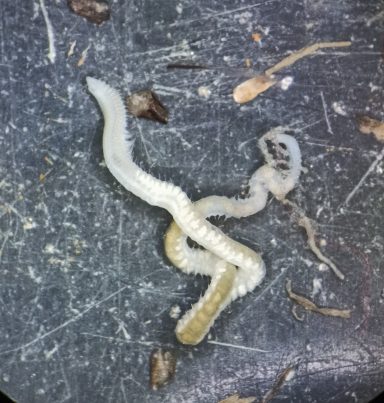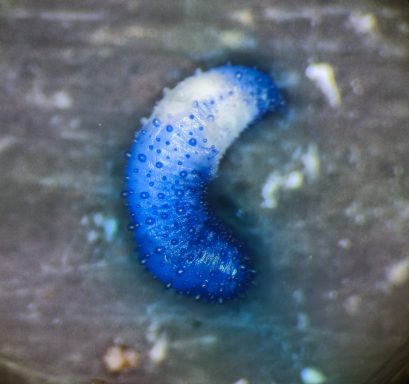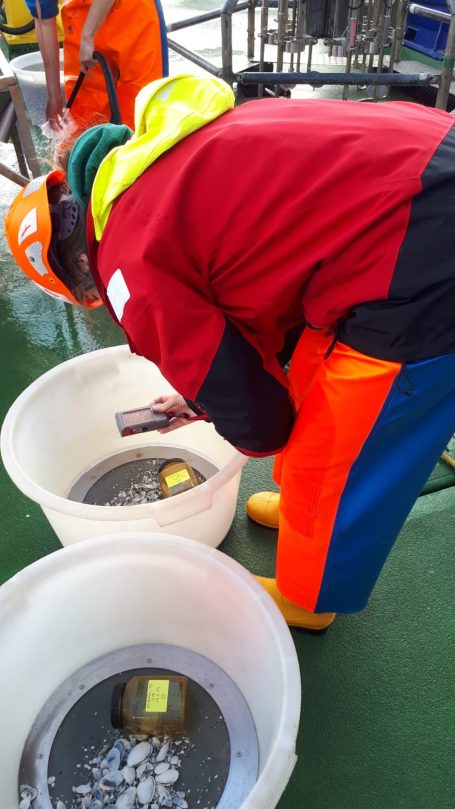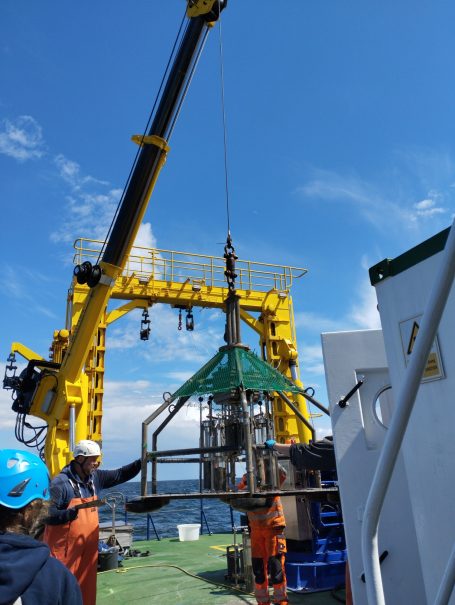My Work at the IOW: Ecology of Benthic Organisms
The Institute for Baltic Sea Research in Warnemünde is home to a wide variety of research groups working in an impressive range of specialisms within marine research. In this diverse research environment, I had the opportunity to work as a research assistant alongside my studies.
I worked in the research group focusing on the ecology of benthic organisms. A key part of my work was analysing macrozoobenthos samples collected from the Baltic Sea. In the laboratory, I identified different species under the microscope, counted the number of individuals in each sample, and measured their biomass. This work helped to better understand the structure and health of benthic communities in different marine areas.
An important part of my experience was participating in the research cruise EMB342, which took place in June 2024. This expedition was part of the MGF-Ostsee II project, aiming to study how ecosystems in the German EEZ Natura 2000 areas develop after mobile bottom-contact fishing is reduced or excluded. During the cruise, our focus was on benthic macrofauna, but other aspects like sediment structure, biogeochemistry, and trawl mark dynamics were also studied.
The main goal was to understand how bottom trawling impacts macrozoobenthos communities, bioturbation, nutrient cycling, and the ecosystem functions at the sediment-water interface. Data collected during the cruise would help assess changes in biodiversity and ecosystem processes following the fishing restrictions, supporting better management and conservation strategies.
During EMB342, we sampled two main focus areas: Rønnebank and Oderbank. At each location, we collected macrozoobenthos samples using a Van Veen grab and a multicorer (MUC). Grab samples provided data on species abundance and biomass, while sediment cores allowed us to study the vertical distribution of organisms. Samples were sieved onboard and fixed for later analysis. In addition, we collected abiotic data such as temperature, salinity, and oxygen concentrations using CTD measurements. Sediment samples were taken for granulometry and organic content analysis.
To capture rare or fast-moving species, we used a Kieler Kinderwagen dredge. Underwater video transects with a towed camera system documented the habitat structure at selected stations. Special attention was given to stations outside the main project areas for a comparison with new eDNA methods under development.

At the same time, I wrote my master’s thesis within the same working group, focusing specifically on the effects of bottom trawling on the functional structure of macrozoobenthic communities in the Baltic Sea. I analysed samples from two habitat types classified according to the HELCOM HUB system: AB.H3L3 (muddy sediments) and AB.J3L9 (sandy sediments).
Using biological trait analysis (BTA), I investigated how bottom trawling changes the traits that define benthic communities, such as position in sediment, mobility, feeding type, and longevity. My aim was not only to document species loss or changes in density but to understand how the functional diversity of these ecosystems is affected. Functional diversity is important because it relates directly to ecosystem processes like bioturbation, nutrient recycling, and overall resilience to disturbances.
More details about my thesis findings will follow in a dedicated blog post.
Skills Gained During My Work at IOW
During my time at the IOW, I developed a wide range of practical and scientific skills. I deepened my knowledge in species identification by analysing macrozoobenthos samples under the microscope. I gained experience in ecological field methods, including sample collection with a Van Veen grab and multicorer, sediment slicing, sieving, and biological sample preservation.
I also learned how to collect and work with environmental data such as temperature, salinity, oxygen concentrations, and sediment properties.
For my master's thesis, I strengthened my statistical skills by using RStudio to analyse the data and create scientific figures. I worked with species abundance, biomass, and biological trait datasets, applying various statistical methods to assess changes in community composition and functional diversity. Through this, I improved my ability to interpret ecological patterns and to present complex data clearly and professionally.
Additionally, I gained valuable experience in scientific teamwork, both in the lab and during the EMB342 research cruise, and learned how to plan, conduct, and document research projects independently and work interdisciplinary.
Wir benötigen Ihre Zustimmung zum Laden der Übersetzungen
Wir nutzen einen Drittanbieter-Service, um den Inhalt der Website zu übersetzen, der möglicherweise Daten über Ihre Aktivitäten sammelt. Bitte überprüfen Sie die Details in der Datenschutzerklärung und akzeptieren Sie den Dienst, um die Übersetzungen zu sehen.





